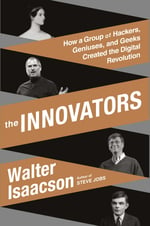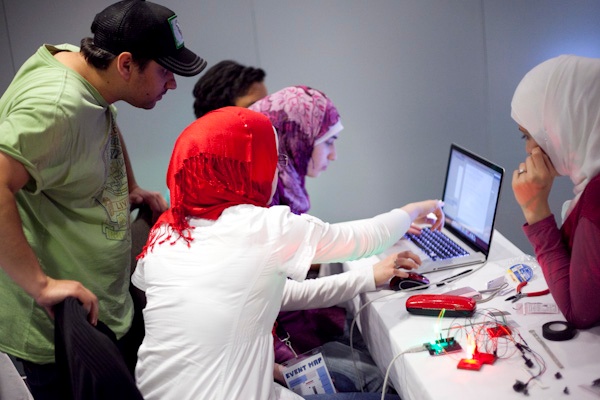I recently started reading "The Innovators: How a Group of Hackers, Geniuses, and Geeks Created the Digital Revolution" by Walter Isaacson and was immediately inspired by something he says.

When talking about his inspiration for writing the book, Isaacson states, “...their ability to work as teams made them even more creative” (Isaacson, 2014, p. 1).
To me, this quote is at the heart of adding project-based learning to the classroom. Giving students the chance to work in teams, especially ones they don’t pick for themselves, pushes them out of their comfort zone and requires them to find creative solutions for both the task at hand and working with one another. The very fact that team members may not agree on the best approach to a problem pushes everyone involved to think deeper and find a solution that was not their first thought, resulting in higher levels of creativity.
A team environment also allows each student to focus on the aspects of the task they do best, while encouraging them to learn other skills from those in their group who excel in different ways.
This is one of the reasons we recommend students work in pairs or small groups when learning to code and program. This can decrease the amount of frustration some students experience when it comes to identifying tiny details that can make or break code. Working in teams also allows for creative brainstorming to happen.

When one student says, “Can it do this...?” and another student jumps in to give it a try, everyone learns more.
As Isaacson points out in his book, history may be full of descriptions of individual inventors who created amazing products, but the truly visionary ideas came from people who could combine one idea with another to create something neither of the original inventors had even thought of. On the invention of the computer, Isaacson writes:
Innovation is usually a group effort involving collaboration between visionaries and engineers, and that creativity usually comes from drawing on many sources. Only in story books do inventions come like a thunderbolt, or a lightbulb popping out of the head of a lone individual. (p. 85)
The internet and personal computers were both giant technological developments, but think how much more powerful they are when combined. The same goes for every student in your class; they all have special skills and interests, but when these are combined, learners can create great things they never would have thought of on their own.
If you are interested in learning more about facilitating teamwork for maker education, consider one of our professional development course options.



Maker Education, student projects